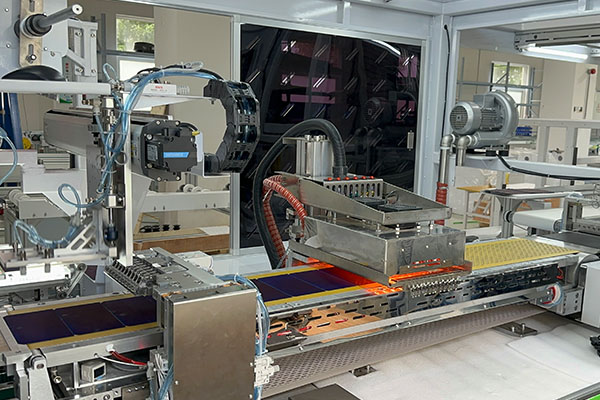Poor welding quality in photovoltaic (PV)stringer machines may result from various factors, including material issues, improper process parameter settings, mechanical failures or design defects, and operational or human factors. Below is a detailed analysis:

I. Material Factors
1.Ribbon Issues
•Uneven or excessively thin solder coating on the ribbon can affect welding quality, leading to false solder joints.
•During production, rewinding, or transportation, ribbons may twist, making it difficult for the welding head to overcome the torsion during pressing, resulting in false welding.
•Excessively high yield strength or low tensile strength of the ribbon may also cause misalignment or white exposure defects during welding.
2.Cell Issues:
Intrinsic cell quality problems, such as mismatched silver paste or oxidation of paste under high temperatures, can lead to poor welding.
Hidden cracks caused by external forces during welding or handling can also compromise welding quality.
II. Improper Process Parameter Settings
1.Welding Temperature:
Too low: Insufficient melting of the tin layer, resulting in false soldering.
Too high: Over-soldering, excessive cell warping, or other defects.
2.Welding Time:
Too short: Incomplete melting of the tin coating, leading to false soldering.
Too long: Over-soldering or cell damage.
3.Heating Time:
Insufficient heating time can adversely affect welding quality.
4.Pressure Pin and Module Ejector Pin:
Missing or misaligned pressure pins may fail to press the ribbon firmly onto the grid lines, causing false soldering.
Stuck or improperly positioned module ejector pins can lead to poor contact between the ribbon and the cell.
III. Mechanical Failures or Design Defects
1.Welding Head Issues:
Improper height or leveling can reduce heat transfer efficiency during welding, causing false soldering or low welding head temperature. Insufficient preheating can also affect quality.
2.Cooling Block Issues:
If the cooling block is uneven, one side of the ribbon may experience false soldering, which is more difficult to detect.
3.Synchronization of Welding Units:
Inconsistent actuation of cylinders across welding units can lead to variations in welding or cooling times for different grid lines, resulting in false soldering.
4.Cutter Issues:
Gaps between the moving and fixed blades of the cutter can cause the cut end to bend downward, preventing proper contact between the ribbon head and the cell, leading to false soldering.
IV. Operational and Human Factors
1.Improper Handling
Excessive manual pressure during string welding or failure to follow process requirements may damage cells or cause poor soldering.
Incorrect handling by lamination operators (e.g., when laying the lamination cloth) may also impact welding quality.
2.Production Environment
Poor workshop conditions, such as dust or foreign particles, may contaminate the cells or ribbons, leading to welding defects.
3.Insufficient Training
New employees unfamiliar with equipment operation and lacking proper training or guidance are more likely to cause poor welding quality.
